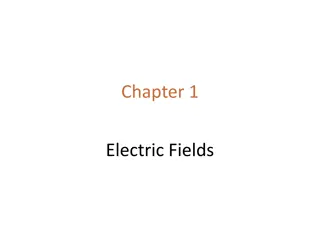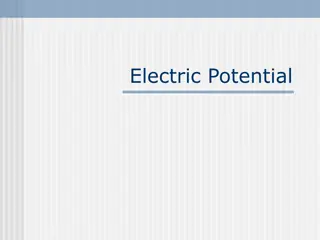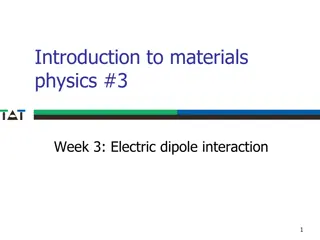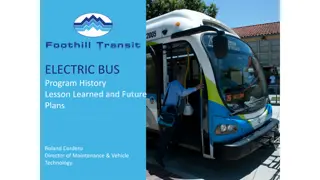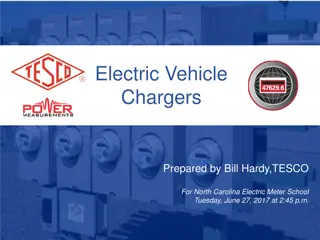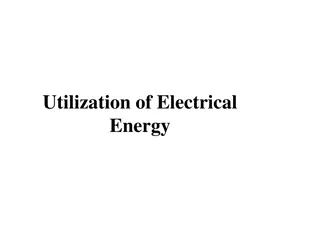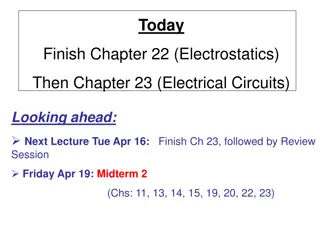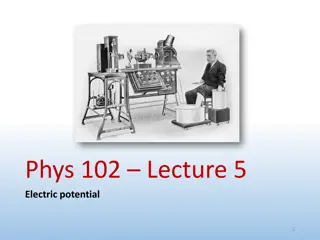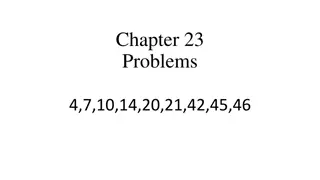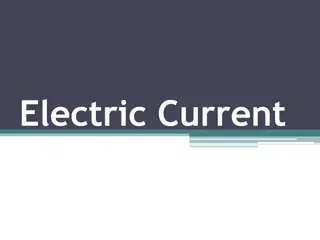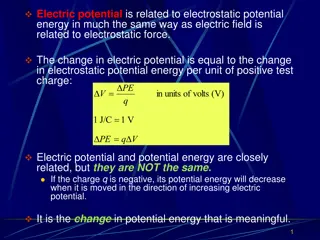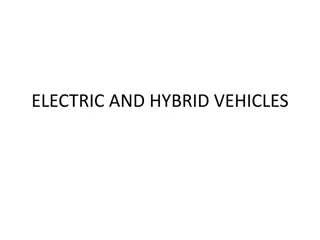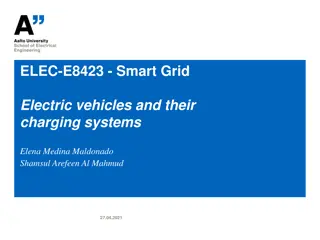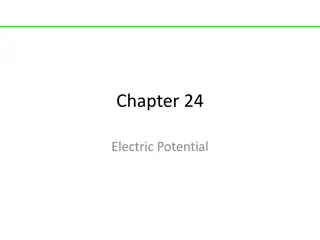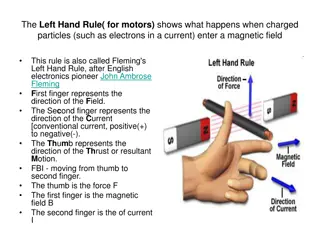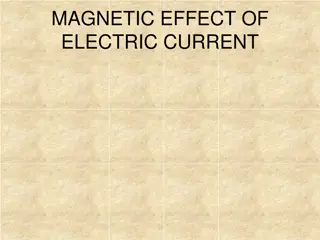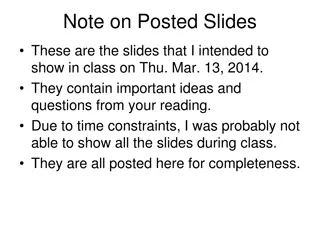
Toyota 7FBMF 16,18,20,25,30,35,40,45,50 Electric Forklift Trucks Service Repair Manual Instant Download
Please open the website below to get the complete manualnn//
Download Presentation

Please find below an Image/Link to download the presentation.
The content on the website is provided AS IS for your information and personal use only. It may not be sold, licensed, or shared on other websites without obtaining consent from the author. Download presentation by click this link. If you encounter any issues during the download, it is possible that the publisher has removed the file from their server.
E N D
Presentation Transcript
ELECTRIC FORKLIFT TRUCKS 7FBMF 16,18 7FBMF 20,25 7FBMF 30,35 7FBMF 40,45,50 7FBMF 30~35, 7FBMF 40~50 7FBMF 16~18, 7FBMF 20~25 AUGUST 2002 Pub. No. PE313 Index < Tillbaka till Servicemanual 7FBMF 16-50 AUGUST 2002 Pub. No. PE313 PRINTED IN JAPAN Pub. No. PE313
SECTION INDEX NAME SECTION GENERAL DEVELOPMENT OBJECTIVES CONTROLLER MULTIPLE DISPLAY BATTERY POWER TRAIN STEERING & REAR AXLE TIRES OPERATOR S COMPARTMENT BODY & ACCESORIES MATERIAL HANDLING & HYDRAULICS SYSTEM SAS MAIN OPTIONS & ATTACHMENTS WIRING DIAGRAM 0 1 2 3 4 5 6 7 8 9 10 11 12 13
FOREWORD This manual mainly describes the development objectives of new Toyota forklift 7FBMF16~50 models, outlines of main component units, structures and functions of new mechanisms and other technical features. Please read it carefully for sales and service activities. This manual has been edited for the vehicles launched into the market in September 2002. Any later change shall be informed through Toyota Industrial Equipment Parts & Service News. Please refer to the repair manual and parts catalog for the matters necessary for servicing.
https://www.ebooklibonline.com Hello dear friend! Thank you very much for reading. Enter the link into your browser. The full manual is available for immediate download. https://www.ebooklibonline.com
0-1 GENERAL Page VEHICLE EXTERIOR VIEWS..................................................0-2 MODEL LINE-UP........................................................................0-3 STANDARD EQUIPMENTS.....................................................0-4 0 1 2 3 4 5 6 7 8 9 10 11 12 13
0-2 VEHICLE EXTERIOR VIEWS 7FBMF16~35 7FBMF40~50
0-3 MODEL LINE-UP Models Model (80V or 72 V) Capacity (Load Center 500 mm) New Previous 1.6 ton 7FBMF16 FBMF16 1 ton Series 0 1 2 3 4 5 6 7 8 9 10 11 12 13 1.8 ton 7FBMF18 2.0 ton 7FBMF20 FBMF20 2 ton Series 2.5 ton 7FBMF25 FBMF25 3.0 ton 7FBMF30 FBMF30 3 ton Series 3.5 ton 7FBMF35 4.0 ton 7FBMF40 4 ton Series 4.5 ton 7FBMF45 5.0 ton 7FBMF50 Frame number stamping Stamping Style (Starting Number) Model Stamping Location 7FBMF16 Stamp on LH & upper surface of front cross plate 7FBMF18 10011 7FBMF18 7FBMF20 7FBMF25 10011 7FBMF25 7FBMF30 7FBMF35 10011 7FBMF35 7FBMF40 7FBMF45 7FBMF50 10011 7FBMF50
0-4 STANDARD EQUIPMENTS : STD P:OPT : Not Available Standard Equipment 1.6-3.5 ton 4.0-5.0 ton Note Electrical System AC Power system for travelling & load handling AC Power controller for steering 1.6-3.5 ton: DC system Multiple display (All round model) P P Chassis SAS (System of Active Stability) Wet brake system Parking brake system of electric switch type Full hydraulic power steering Body Overhead guard Memory tilt steering column ORS seat Floor mat Battery hood damper Assist grip (LH) Instrument panel holder Paper clamp on battery hood Drawbar pin Load Handling System Wide visible mast (V) H3300 mm Load bucharest H1220 mm Fork 1.6~1.8 ton: L800 mm 2.0~5.0 ton: L1000 mm Mini-lever control system 3-way valve (A400) Others Electric horn Headlight P P Rear-view mirror P P
1-1 DEVELOPMENT OBJECTIVES Page DEVELOPMENT OBJECTIVES..............................................1-2 FEATURES (SELLING POINTS)............................................1-3 AC POWER SYSTEM................................................................1-6 0 1 2 3 4 5 6 7 8 9 10 11 12 13
1-2 DEVELOPMENT OBJECTIVES TOYOTA 1.6 ~ 3.0 ton FBMF 16 ~ 30 counterbalance type electric 4-wheel forklift trucks have had an estab- lished reputation as high performance forklift trucks since first their model launched in 1989. There have been rising demands for clean electric forklift trucks with relevant to environmental concern; and fur- ther the market wants higher capacity forklift than 3.0 ton beside the existing capacity models. Keeping these points in mind, the design concepts were established, as follows: 1. AC induction motor Making best use of the advantages of AC induction motor drive system to respond to customer's needs for the most suitable load handling system. 2. SAS - System of Active Stability In order to gain better stability, SAS has been developed. SAS, adopted by 7 series, has already won high con- fidence from the industrial truck markets. This same level of stability will be incorporated into the new 7FBMF 16 ~ 50 models. 3. Introducing larger capacity models of 3.5 ton and over in addition to new 1 ~ 3 ton capacity models to en- hance the product range. Creation of over 3.5 ton capacity models has been undertaken together with the model changes launched for 1 ~ 3 ton capacity models. Most of all, the AC induction drive motor system has been a pioneering endeavor having rallied our technological powers for a successful introduction in our products. Excellent features inherent to AC induction motor have been used to its full advantages with success. Furthermore, varied demands for additional features have been implemented. Emphasis has been placed on system design development such as the mini-lever system and the wet brake system, etc. The 7FBMF 16 ~ 50 models certainly have outstanding features compared to other forklift models. On operation, the differences are so obvious in fundamentals, performance, comfort, etc. New 7FBMF 16 ~ 50 models are commendable as an epoch in new era.
1-3 FEATURES (SELLING POINTS) Table of selling points mfr: manufacturer : Newly adopted, : Improved S: STD, P: OPT, : Not available 1.5 ~ 3.5t 4.0 ~ 5.0t Relative page 0 1 2 3 4 5 6 7 8 9 10 11 12 13 Selling point Function or Item Objective mfr A Improved performance Improvement in operation hours and work cycles without an operator noticing a decline in performance Power keep function Better performance at a low battery level 1-8 2-2 S S Availability of different power modes for different needs: H mode: High power mode P mode: Power mode S mode: Standard mode Power select function A touch on a switch selects optimum power mode. S 1-11 2-2 S Other customized modes are available as well. Load handling power control S Improvement on operator comfort Improvement in ease of getting on and 0ff The entry area has been widened by installing the battery under floor Ease of getting on and off equivalent to the engine- powered model S S 1-10 Increased leg space Expansion of foot space S S 1-10 Improved serviceability Improved serviceability AC motor Need for servicing motor brushes is eliminated. S S 1-7 Overheat protector Power is reduced automatically when motor is overheated. 2-5 5-2 S S AC controller Need for servicing contactor is eliminated. S S 2-2 Thermal protector Output is reduced automatically when controller is overheated. 2-5 5-2 S S Reduced need for servicing brake Wet brake system Service life of brake system is prolonged S S S 5-10 Regenerative system (accelerator off) Service life of brake system is prolonged. S S S 2-5 Higher safety during servicing Jacking points under the counter weight and frame Jacking points indicated for higher safety S S 9-2
1-4 1.6 ~ 3.5t 4.0 ~ 5.0t Relative Page Selling point Function or Item Objective mfrA Safety Improved turning stability SAS-active control rear stabilizer Rear wheel ground grip force increased when required S S 11-6 Improved material handling stability SAS-active mast function controller (front tilt angle control) Controls front tilt angle for high lifting, etc. S S 11-10 Load collapse reduction SAS-active mast function controller (rear tilt speed control) Controls rear tilt speed for high lifting, etc. S S 11-10 Operation error prevention for lift lever SAS-active mast function controller (key-lift interlock) Prevents unintended fork lowering S S 11-10 Large reduction of natural drop and front tilt (1/3 of previous values) SAS-active mast function control (key-lift interlock) Cuts off valve oil leaks when the key switch is turned OFF. S S 11-10 Easy monitoring of SAS operation status SAS-operation monitor, indicator lamp, and diagnosis Easy recovery from SAS faults S S 3-2 Availability of maximum travel speed control Speedometer Large display easy to see S S 3-4 Speed alarm Warning is given when travel speed exceeds preset level. P P 3-5 Speed limiter Sets limits to travel speed S S 3-4 Improved visibility High-mount rear combination lamps Visibility of forklift truck from surrounding area P P 9-6 Forward view Super-wide visible mast Maintains advantages of internal width of wide mast. S S 10-2 Operability, etc. Easy operation SAS-active mast function control (automatic fork leveling control) Automatically sets the mast vertical. S S 11-12 Steerage, load handling lever, accelerator pedal Reduced operation power S S Mini-lever S S P 10-12 Anti roll back S S S 2-5 Improved traveling stability Regenerative system (accelerator off) Regenerative braking equivalent to engine brake S S 2-5 Smooth and quick switchback operation AC motor and AC controller Quick switchback operation S S 2-5 without time lag Improved meter of screen Multiple display Legible display S S 3-2 Battery roll out P P 12-3
1-5 Outline of Design Major differences from previous models Relative page Item New models Previous models Applicable model Applicable model General Overhead guard height 2195mm 1.6 ~ 1.8 ton 2160mm 1.6 ton 2195mm 2.0 ton 2180mm 2.0 ton 2215mm 2.5 ton 2180mm 2.5 ton 0 1 2 3 4 5 6 7 8 9 10 11 12 13 2215mm 3.0 ~ 3.5 ton 2275mm 3.0 ton 2310mm 4.0 ~ 5.0 ton Wheelbase 1420mm 1.6 ~ 1.8 ton 1360mm 1.6 ton 1580mm 2.0 ~ 2.5 ton 1505mm 2.0 ~ 2.5 ton 1725mm 3.0 ~ 3.5 ton 1650mm 3.0 ton 2080mm 4.0 ~ 5.0 ton Motor Drive motor (72V/80V) AC: 12.0 / 13.3 kw 1.6 ~ 1.8 ton DC: 7.6 / 8.6 kw 1.6 ton AC: 15.4 / 17.1 kw 2.0 ~ 3.5 ton DC: 10.1 / 10.6 kw 2.0 ~ 3.0 ton 5-2 AC: 14.9 / 16.6 kw 4.0 ~ 5.0 ton Pump motor (72V/80V) AC: 12.0 / 13.5 kw 1.6 ~ 1.8 ton DC: 11.5 / 13.0 kw 1.6 ton AC: 16.9 / 18.6 kw 2.0 ~ 2.5 ton DC: 14.8 / 17.0 kw 2.0 ~ 2.5 ton 10-27 AC: 16.9 / 18.6 kw 3.0 ~ 3.5 ton DC: 16.5 / 18.5 kw 3.0 ton AC: 22.8 / 25.4 kw 4.0 ~ 5.0 ton PS motor (72V/80V) DC: 1.0 / 1.1 kw 1.5 ~ 3.5 ton DC: 1.0 / 1.1 kw 1.5 ~ 3.0 ton 10-27 Same motor for PS as well as hydraulic oil pump 4.0 ~ 5.0 ton Controller Traveling Main controller & traveling motor driver 1.6 ~ 5.0 ton Traveling & load handling controller 1.6 ~ 3.0 ton Load handling Main controller & load handling motor driver 1.6 ~ 3.5 ton SAS Controller of SAS includes the steerage control 1.6 ~ 5.0 ton Section 2, 11 Steerage 1.6 ~ 3.5 ton Steerage controller 1.6 ~ 3.0 ton Controller of main includes the steerage control 4.0 ~ 5.0 ton Brake mechanism Main brake Wet brake 1.6 ~ 5.0 ton Dry brake 1.6 ~ 3.0 ton 5-10 Parking brake Parking brake system of electric switch type 1.6 ~ 5.0 ton Parking brake lever of ratchet type 1.6 ~ 3.0 ton 5-13 SAS equipment SAS specifications SAS-active control stability 11-6 Mast function control Front tilt angle control Rear tilt speed control Automatic fork leveling control Key-lift interlock 1.6 ~ 5.0 ton 11-10 Frame Overhead guard Clearance 1055mm 1.6 ~ 3.5 ton 1030mm 1.6 ~ 3.0 ton 1075mm 4.0 ~ 5.0 ton Step height 1.6 ~ 1.8 ton 515mm 1.6 ton 525mm 2.0 ton 540mm 2.0 ~ 2.5 ton 2.5 ton 545mm 3.0 ~ 3.5 ton 675 (2nd) /160 (1st) 3.0 ton Section 9 535mm 4.0 ~ 5.0 ton Underclearance Center of Wheelbase (Without load) 1.6 ~ 1.8 ton 110mm 1.6 ton 90mm 2.0 ton 130mm 2.0 ~ 2.5 ton 2.5 ton 110mm 3.0 ~ 3.5 ton 225mm 3.0 ton 150mm 4.0 ~ 5.0 ton Others Floor mat Equipped 1.6 ~ 5.0 ton Nothing 1.6 ~ 3.0 ton Material handling lever Mini-lever with armrest 1.6 ~ 5.0 ton Manual lever on the front cowl 1.6 ~ 3.0 ton 10-12 Seat ORS seat with seat belt 1.6 ~ 5.0 ton Seat with seat belt 1.6 ~ 3.0 ton 8-4
1-6 AC POWER SYSTEM AC system in industrial trend Industries have already employed AC power system by making use of its features. Three major features are: System design advantages Product level advantages Industry 1970 80 90 Simpler and smaller construction of motor More powerful motor can be used without increasing size. Machine tool 1 DC AC Three-phase AC control realizes wider control range. Wide control range offers a higher performance and operability. Train 2 DC AC Motor brushes and contactors are dispensed with. Reduced maintenance cost as the needs for servicing motor brushes and contactors are eliminated. Electric Automobiles (EV) DC AC 3 Electric Forklifts DC Thereby industrial truck engineers worldwide have already been aware of the splendid features of AC power sys- tem to be implemented in electric forklift trucks. New AC drive motor systems have been adopted not only in the smaller capacity models, but also in the larger capacity models. This new system resolves the opposing factors between larger output necessity and compact- ness.
1-7 AC power system as compared with DC power system In the DC power system the controller will chop the battery current in repetition and control the frequency cycles of ON and OFF. The motor performance will change in proportion with the frequency cycles between ON and OFF, thereby the inching at start to the max. performance is controlled. The AC power system in the new models includes a controller that transforms the battery current into a three- phase alternating current. The motor power is controlled by changing the sinusoidal waveform (frequency, amplitude, etc.) of the three-phase alternating current. Motor drive voltage, motor construction, and controller details differ between DC and AC power systems, as follows: Comparison between DC and AC power systems Motor voltage Motor construction Controller Mean voltage Motor Brush Commutator ON Battery Controller Contactor DC power system Microcomputer control OFF Battery voltage Mean voltage A chopper circuit converts the bat- tery current (DC) into a rectangular waveform and controls the mean voltage at a desired level. Brushes and commutator require servicing. Complex mechanism Motor power can be controlled sim- ply via the mean DC voltage. Contactors for reversing the motor rotation are required. Stator ferrit core Sine wave Stator coil Controller Battery Motor Battery voltage AC power system Motor voltage Microcomputer control Controller converts battery current (DC) into AC. Brushes and commutator, which re- quire servicing, arer not used. Compact and lightweight A control module converts DC into three-phase AC. Contactor for reversing the motor rotation are not required.
1-8 Power keep function (Functions in power mode: P, standard mode: S) Power keep function using the benefit of AC power system further lengthen the operation hours epochally. With conventional electric powered forklift trucks, the vehicle performance decreases gradually as the battery level goes low. The power keep function adopted to new models takes advantage of the increased controllability provided by the AC system to keep the vehicle performance even when the battery level has become low. With this power keep function, the maximum operating hours have increased by 25%, and the number of work cycles that can be completed without the operator noticing a decline in performance has also increased by 25%. New power keep function offers a significant and essential improvement in the material handling efficiency. (See page 2-2 for further detail.) Battery discharge level and vehicle performance Battery capacity warning 1.1 Battery usage limit area New model 1 0.9 Lift interruption Previous model 0.8 Decrease in performance 25% up 0.7 60% 20% 40% 80% 100% 0% Battery discharge level (%) Previous model (2.5 ton:S mode) Efficiency operation hour: 161min New model (2.5 ton:S mode) Efficiency operation hour: 200min Even the battery indicator is flashing to indicate the charge warning, the performance level of 7FBMF series is batter than that of the former FBMF models. In view of the battery protection, it is advisable to charge the battery before discharging to the limit.
1-9 Performance features in comparison mfr: manufacturer Traveling speed (km/h) [a] Acceleration (sec) [b] Slope climbing speed (km/h) [c] 2.5 ton *: Loaded *Loaded: 0-10m *Loaded: 1/10 slope 5.7 16 16 7.0 5.3 5.3 6.9 5.2 5.6 5.6 14 4.6 14 14 5.3 H P S FBMF mfrA H P S FBMF H P S FBMF mfrA mfrA Efficiency operation hours (min) [d] (Toyota 30m cycle) No of cycle (cycle) [e] (Toyota 30m cycle) *Battery 500Ah *Battery 500Ah 200 185 138 131 163 161 111 112 125 88 H P S FBMF mfrA H P S FBMF mfrA Traveling speed (km/h) [f] Acceleration (sec) [g] Slope climbing speed (km/h) [h] 4.5 ton *Loaded: 1/10 slope *Loaded *Loaded: 0-10m 6.3 14 4.8 5.9 13 13 13 3.4 3.4 5.7 5.4 H P S H P S H P S mfrA mfrA Efficiency operation hours (min) [i] (Toyota 50m cycle) No of cycle (cycle) [j] (Toyota 50m cycle) *Battery 700Ah *Battery 700Ah 218 100 204 96 174 80 133 67 H P S mfrA H P S mfrA
1-10 Operator comfort (1) Improvement of the ease of getting on and off By new battery layout, improved the ease of getting on and off (mm)560 290 260 mfrA 7FBMF FBMF Entry clearance (2.5 ton) [a] (2) Improvement of comfort By new battery layout, improved the leg space (mm)640 604 555 mfrA 7FBMF FBMF Leg space (2.5 ton) [b]
1-11 Power select function Using the power select function, the operator can select a desirable power mode. Even though the conventional models also had a power selection switch, it only produced a small difference in the acceleration. New models use an AC motor instead of a DC motor. Since and AC motor is simpler and smaller, it becomes possible to install a motor that produces an output higher than that of a conventional DC motor. In addition, the operator can select appropriate mode from the following power modes simply by operating a switch. High power mode <H mode> : The most active mode with the quickest cycle-time Power mode <P mode> : The highest efficiency mode with quick cycle time and long operation hour Standard mode <S mode> : The longest operation hour mode with the performance equivalent to MFRA In order to further satisfy the individual customer, a power select function has been provided. The power select function enables the operator to select one from six power modes, including H, P and S modes, for traveling. The operator can select H mode for operations requiring power and high performance. Select S mode for long time operations, providing the operator with optimum performance to suit the operator s needs and greatly enhance efficiency. <7FBMF25> : Fixed mode : Selectable only through power select function : Power select function default setting Cycles High power mode <H mode> 44 43 Power mode <P mode> 42 Previous model Standard mode <S mode> 41 30m cycle pattern 180min 240min Efficient operation hours
1-12 Reduced maintenance cost The following particular items are inherent to the conventional electric powered models. Supplying distilled water to the battery Material handling motor brush replacement Material handling motor contactor replacement Traveling motor brush replacement Traveling motor contactor replacement The new 7FBMF model eliminates the need for brush and contactor replacement because the new AC motor does not have brushes and the new AC controller does not have contactors. The average customer can benefit from this by an annual cost savings of 69% for maintenance expenditures. Eur (USD) 1Eur = 0.98USD 1460 (1490) 1500 519 5 Annual Cost Saving 69% by Eliminating ~ 1000 4 294 3 127 69 451 (460) 500 2 1 1 451 0 New model Previous model Taking advantage of the wider control range of the AC power system, a regenerative system is adopted. The AC induction motor generates a braking force when the vehicle is traveling with the accelerator pedal at rest. Also the electromotive force generated in the AC motor, while the accelerator pedal is released, converts the braking effect energy into electrical energy that is sent to the battery. This regenerative system increases the operation hours. At the same time, the regenerative system improves the traveling feel because it allows the operator to use less brake pedal force to slow the truck down. Further- more, the regenerative system reduces load on the brake system, slowing down brake lining wear and decreas- ing the brake maintenance costs.
1-13 Stabilizing features The world-first System of Active Stability (SAS), adopted by the 7FB series models, is available for the new mod- els, too. Using the SAS the new models achieve the stability level equivalent to that achieved by the 7FB series models. The following outlines the SAS. For more details of the SAS option, refer to Section 11 SAS . Stability feature Outline Rear stabilizer (swing lock) The rear wheel swing mechanism is locked at high lift-heights and heavy loads, and during a quick turn to obtain a better ground grip force from all four wheels. Mast function control Front tilt angle control The front tilt angle is smaller at high heights and heavy loads; greater at low heights and light loads. Rear tilt speed control The rear tilt speed is slower at high heights and faster at low heights. Key-lift interlock The lift lever cannot function by inadvertent contact. Automatic fork leveling control A push on a control button followed by a front tilt operation tilts the mast until the forks are horizontal. Improvement on operability 1. Mini lever The hydraulic control levers are displaced to the arm rest fore-front and optimal length, and spacing are given on basis of human engineering. An operator can manipulate the control lever with a hand on the arm rest. Fine operation adjustment can be achieved with the display. The control lever position is ad- justable vertically as well as to lengthwise. Pleasant material handling operation with less fatigue can be ensured.
Suggest: For more complete manuals. Please go to the home page. https://www.ebooklibonline.com If the above button click is invalid. Please download this document first, and then click the above link to download the complete manual. Thank you so much for reading
1-14 Anti-rollback The anti-rollback function is provided to prevent the truck from rolling down on a slope. This is realized by making use of the combined features of the drive motor electric brake and the parking brake. Restarting can be done smoothly without rolling down. Model line-up The model line-up has been widened by the development to 3.5 ~ 5 ton class new model ranges; besides, the 1.8 ton model is added onto the 1 ~ 3 ton classes to meet with varied needs from the markets. : New : Continuation Capacity (kg) 1600 1800 2000 2500 3000 3500 4000 4500 5000 7FBMF TOYOTA FBMF
2-1 CONTROLLER Page MAIN CONTROLLERS .............................................................2-2 General.................................................................................2-2 Controller Configuration Diagram..............................2-3 0 1 2 3 4 5 6 7 8 9 10 11 12 13 MAIN FEATURES OF CONTROLLER .................................2-5
https://www.ebooklibonline.com Hello dear friend! Thank you very much for reading. Enter the link into your browser. The full manual is available for immediate download. https://www.ebooklibonline.com

